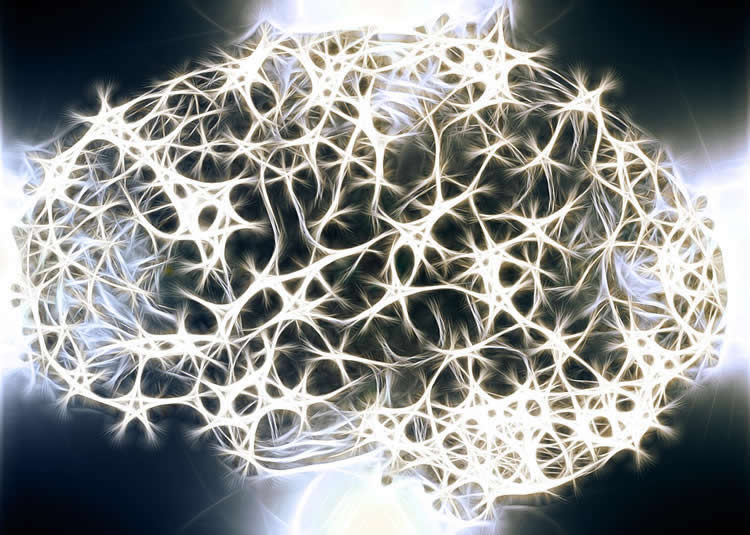Summary: UCLA researchers use transcranial direct current stimulation to help boost auditory processing in people with schizophrenia.
Source: UCLA.
UCLA researchers have found that people with schizophrenia were able to more accurately determine whether two auditory tones matched or differed, after receiving a type of electrical brain stimulation. Being able to distinguish tones is essential for verbal communication.
BACKGROUND
People with schizophrenia have difficulty discriminating between tones of differing frequencies. This is thought to impair their ability to interpret tone of voice, resulting in social difficulties. Transcranial direct current stimulation, or tDCS, is a non-invasive neural stimulation technique that passes a weak electrical current (equivalent to a nine-volt battery) through the brain, changing the ability of neurons to respond to stimuli. Scientists wanted to find out if tDCS — which comes in two active varieties, anodal or cathodal — could boost auditory processing in people with schizophrenia.
METHOD
In 12 people with schizophrenia, researchers applied tDCS via electrodes on the scalp to the auditory cortex, the part of the brain that processes auditory information. The participants received anodal stimulation, cathodal stimulation or a placebo stimulation for 20 minutes. Immediately following stimulation, subjects listened to pairs of tones and were asked whether they sounded identical or different. Cathodal stimulation was associated with significant improved tone discrimination ability. Researchers’ next step is to see if the findings can be replicated in a larger group and to test how long the effects of tDCS last.

IMPACT
The technique could present an inexpensive strategy for improving the lives of people with schizophrenia in ways currently unaddressed by medication.
The study’s first author is Dr. Walter Dunn, and the senior author is Michael Green, both of the West Los Angeles VA Medical Center and the UCLA Semel Institute for Neuroscience and Human Behavior. Other authors are Jonathan Wynn, Dr. Allan Wu, Dr. Marco Iacoboni and Gerhard Hellemann, all of UCLA; and Yuri Rassovsky of Bar-Ilan University, Israel.
Funding: The study was supported by the Veterans Administration Desert Pacific Veterans Integrated Service Network 22 Mental Illness Research, Education and Clinical Center.
Source: Leigh Hopper – UCLA
Image Source: NeuroscienceNews.com image is in the public domain.
Original Research: Abstract for “The effect of bilateral transcranial direct current stimulation on early auditory processing in schizophrenia: a preliminary study” by Walter Dunn, Yuri Rassovsky, Jonathan Wynn, Allan D. Wu, Marco Iacoboni, Gerhard Hellemann, and Michael F. Green in Journal of Neural Transmission. Published online July 7 2017 doi:10.1007/s00702-017-1752-5
[cbtabs][cbtab title=”MLA”]UCLA “Electrical Stimulation of Brain May Help People with Schizophrenia Learn to Communicate Better.” NeuroscienceNews. NeuroscienceNews, 16 July 2017.
<https://neurosciencenews.com/schizophrenia-electrical-stimulation-7089/>.[/cbtab][cbtab title=”APA”]UCLA (2017, July 16). Electrical Stimulation of Brain May Help People with Schizophrenia Learn to Communicate Better. NeuroscienceNew. Retrieved July 16, 2017 from https://neurosciencenews.com/schizophrenia-electrical-stimulation-7089/[/cbtab][cbtab title=”Chicago”]UCLA “Electrical Stimulation of Brain May Help People with Schizophrenia Learn to Communicate Better.” https://neurosciencenews.com/schizophrenia-electrical-stimulation-7089/ (accessed July 16, 2017).[/cbtab][/cbtabs]
Abstract
The effect of bilateral transcranial direct current stimulation on early auditory processing in schizophrenia: a preliminary study
Transcranial direct current stimulation (tDCS) was applied bilaterally over the auditory cortex in 12 schizophrenia patients to modulate early auditory processing. Performance on a tone discrimination task (tone-matching task—TMT) and auditory mismatch negativity were assessed after counterbalanced anodal, cathodal, and sham tDCS. Cathodal stimulation improved TMT performance (p < 0.03) compared to sham condition. Post-hoc analyses revealed a stimulation condition by negative symptom interaction in which greater negative symptoms were associated with a better TMT performance after anodal tDCS.
“The effect of bilateral transcranial direct current stimulation on early auditory processing in schizophrenia: a preliminary study” by Walter Dunn, Yuri Rassovsky, Jonathan Wynn, Allan D. Wu, Marco Iacoboni, Gerhard Hellemann, and Michael F. Green in Journal of Neural Transmission. Published online July 7 2017 doi:10.1007/s00702-017-1752-5






